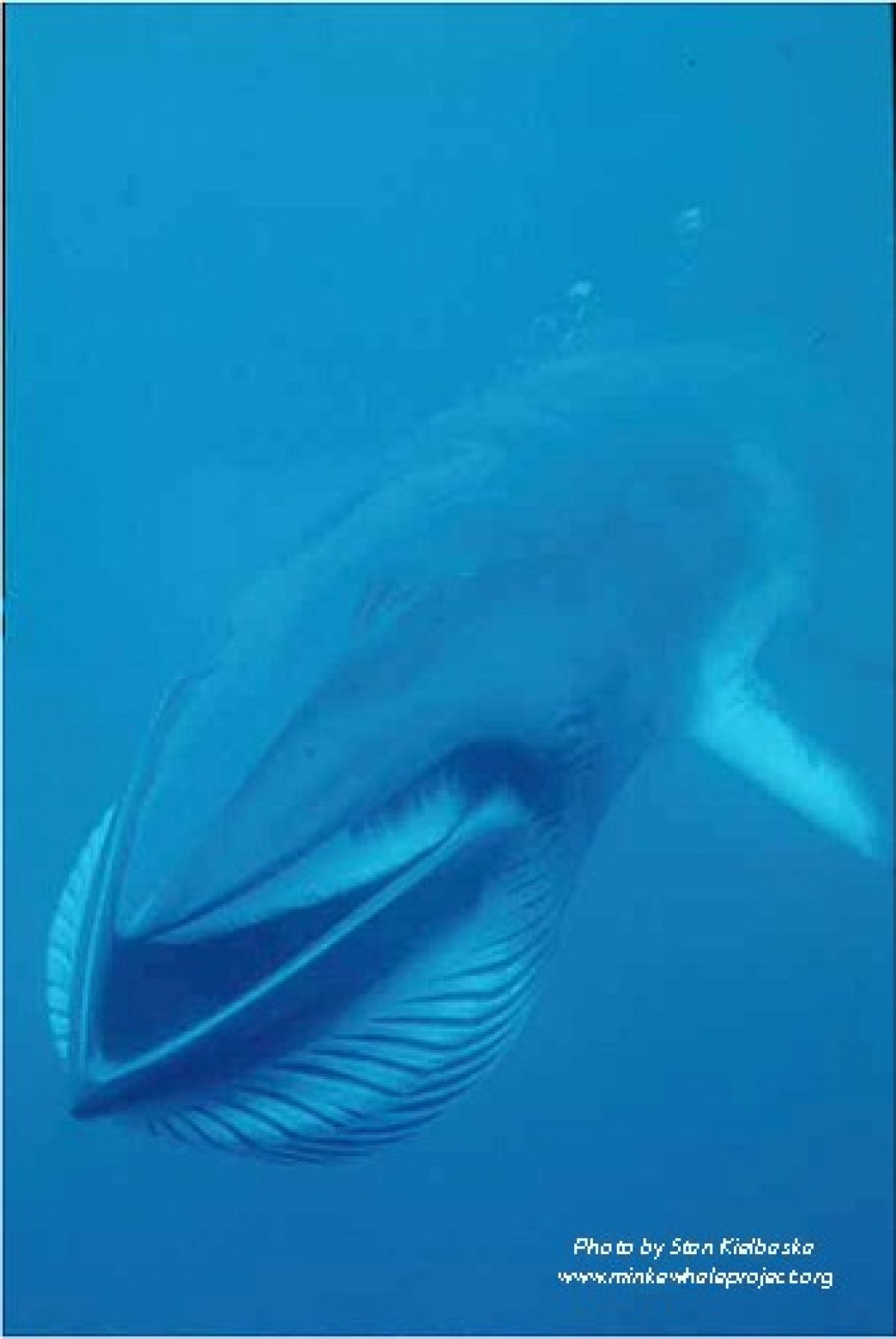Underwater Behaviour
Close approach (3m or less) to snorkellers
Dwarf minkes are highly inquisitive and often approach snorkellers and divers to within close distances, sometimes interacting for extended periods. Close approaches (3m or less) occur occasionally and are more likely to happen when snorkellers are stationary in the water, holding onto a rope, remaining relatively still and calm.
Very close approaches of 1m or less are rare, but have occured in longer encounters where the whales’ confidence appeared to have increased, possibly due to the predictability of swimmers’ movements.
Note: Swimming towards a whale closer than 30m is illegal under Australian law. Touching or attempting to touch a whale is also illegal.


Figures 1 & 2: Close approaches to snorkellers.
Bubble-release
One spectacular but rare behaviour is when a whale exhales and releases air when still submerged. This could be either:
a bubble trickle, when the whale releases a small trickle of bubbles from its blowholes.
a bubble trail, when the whale releases a trail of bubbles while moving forward. In this case the bubbles may look like a screen or a curtain when passing upwards through the water column.
a bubble blast, when the whale abruptly releases a large amount of air forming a cloud of bubbles. The whale stays submerged and the behaviour is not immediately followed by breathing.
Whales may also occasionally exhale immediately prior to breaking the surface to breathe (a subsurface exhalation). The released air may form a stream or a cloud of bubbles, depending how fast the whale travels and how rapidly the air is released.


Figures 3 & 4: Bubble releases.
Lateral rolls and loops
Belly presentation
A moving whale turns onto its side presenting its bright white belly to an object, swimmer or another whale. This lateral position is sometimes maintained for several seconds. When observed the behaviour is often repeated. When a whale presents its belly to a swimmer, this can provide an opportunity to determine the sex of the whale.
Lateral rolls
Whales often roll onto their side when turning and changing direction. On rare occasions, a whale has turned laterally onto its back (belly up) while moving forward (180 degree lateral roll), before turning back in the opposite direction. Also rare, dwarf minke whales have been observed to perform a 360 degree lateral roll while swimming forward.


Figures 5 & 6: Belly presentations (in both images the whale is a female).
Jaw gape, gulp, jaw clap
These are rare and very spectacular behaviours. In at least some cases, such behavioural displays appear to have been directed at a swimmer but these behaviours have occurred in other situations in which neither feeding nor display seems to be involved.
During a jaw gape, a whale opens its jaws exposing its baleen plates and oral cavity. This behaviour can be displayed on the surface (e.g in combination with a spyhop/headrise) or underwater and can range from the whale flashing its baleen to fully opening its mouth.
A gulp occurs when a whale opens jaws and partly or fully inflates its throat pouch. The whale appears in total control of how much water is entering its oral cavity and to what degree the throat pouch is extended (see Arnold et al. 2005).
A jaw clap occurs when a whale opens its mouth above the surface and its jaws are brought together with a loud crack.


Figures 7 & 8: Jaw gapes (underwater and at the surface). Images (L-R) courtesy of Stan Kielbaska and John Rumney.
Potential signs of disturbance
Research into dwarf minke whale behaviour is ongoing and much remains unknown. It is difficult to determine whether whales are disturbed by the presence of boats or swimmers, however it is important to be aware of potential signs of disturbance. The following behaviours, identified from studies of other cetaceans, may indicate that a dwarf minke whale is disturbed:
- Sudden speed ups / startle responses
- Sudden sharp veers away from swimmers or vessels
- Increased distance of passes
- Changes in breathing patterns (i.e. where they surface around the vessel and/or the intervals between breaths)
- Changes in acoustic behaviour
- Any signs of protective behaviour by other whales when a calf is present (e.g. screening/shepherding or back arching displays)
A variety of behavious have been described in other whale and dolphin species as aggressive (e.g. tail slashes, trumpet blows, bubble blasts, jaw gapes and jaw claps). Some of these behaviours have also been documented in dwarf minke whales (e.g. bubble blasts, jaw gapes and jaw claps) however they are rarely seen and may simply be part of their social behaviour repertoire. In nearly two decades of field research on dwarf minkes, such behaviours have never been followed by a higher level of aggression or been associated with other agonistic behaviour.
